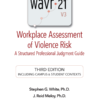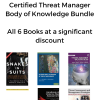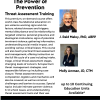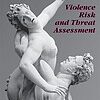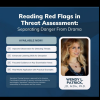Advanced Threat Assessment and Threat Management: Front Line Defense for Evolving Threats
Recent acts of targeted violence in the United States and elsewhere, such as the attack on the Capitol, The Pensacola jihadist terrorist attack, extreme right wing conspiracies to attack public figures, and other threats and attacks from the right and the left, reinforce the need for law enforcement, security, corporate, education and mental health professionals to be knowledgeable and skilled in threat assessment and threat management. Many acts of targeted violence are preventable, making their eventual occurrence even more tragic. Of those perpetrators who have gone on to commit violence, many were known to their respective communities as being a potential problem. Threat assessment and threat management have been shown to be effective processes which not only identify a subject at risk but also can provide a road map for successful interventions.
This two day workshop will provide the most up to date information on threat assessment and threat management. Taught by Dr. Reid Meloy, a leading expert in the field, this program will showcase the threat assessment process, look at the warning behaviors seen prior to targeted violence, summarize what we know about mass murderers, examine ideologically driven (terrorist) acts, the stalking of public figures and prior sexual intimates, examine the emerging threat posed by extreme right wing anti-government groups, discuss how to evaluate if an individual has become radicalized toward terror, look at new research on threats, describe the WAVR-21 (Workplace Assessment of Violence Risk) and its contribution to workplace and campus threat assessment, consider the “dark triad” of targeted violence, present a factual look at mental illness and violence risk, and describe contemporary risk management strategies. Additionally, Dr. Meloy will introduce the TRAP-18 (Terrorist Radicalization Assessment Protocol) as terrorism has become an important area of concern in threat assessment. All allied professions to the threat assessment process should attend.
Workshop Content:
Threat Assessment vs. Violence Risk Assessment
Warning Behaviors Within Threat Assessment
Domains of Targeted Violence:
Adolescent and Adult Mass Murder
Ideologically Driven (Terrorist) Acts
Stalking of Public Figures
Stalking of Prior Sexual Intimates
The emerging threat posed by extreme anti-government groups
New Research on Threats
The WAVR-21 Approach to Workplace and Campus Threats
The Dark Triad in Targeted Violence (Narcissism, Psychopathy and Machiavellianism)
The Nature of Psychosis and Targeted Violence
The TRAP-18 (Terrorist Radicalization Assessment Protocol)
Risk Management Strategies: The Public and Private Partnership
Learning Objectives: At the conclusion to this program, participants should be able to:
Describe at least three differences between threat assessment and violence risk assessment
Identify eight warning behaviors for targeted violence
List three behavioral characteristics of the adolescent mass murderer
Compare public figure stalking to the stalking of prior sexual intimates and describe three differences
Identify how the WAVR-21 provides a road map to threat assessment in the workplace and on a campus
Describe how the “Dark Triad” contributes to risk of targeted violence
Identify in which ways psychosis may contribute to targeted violence
List three contemporary risk management strategies in cases involving threats

